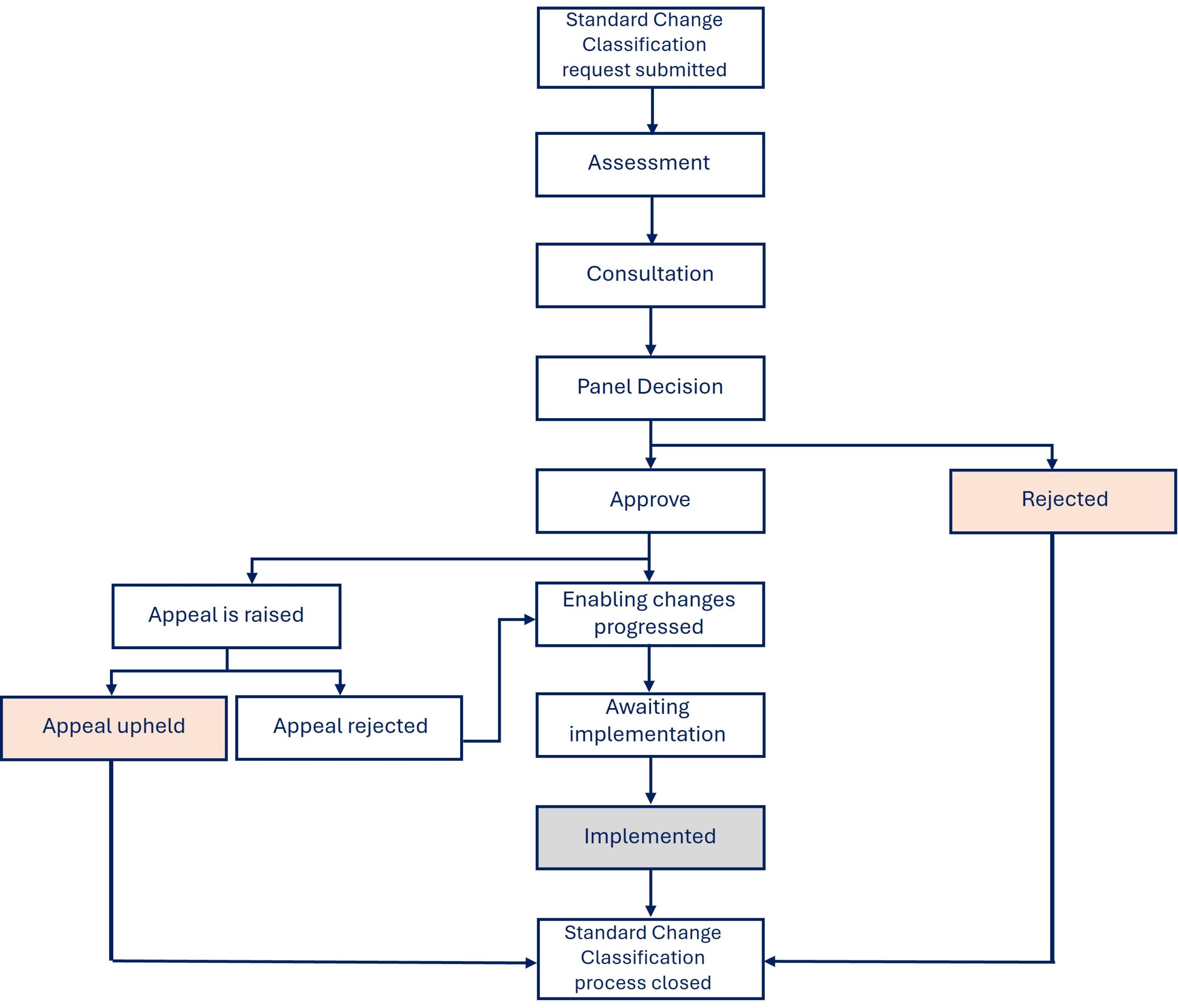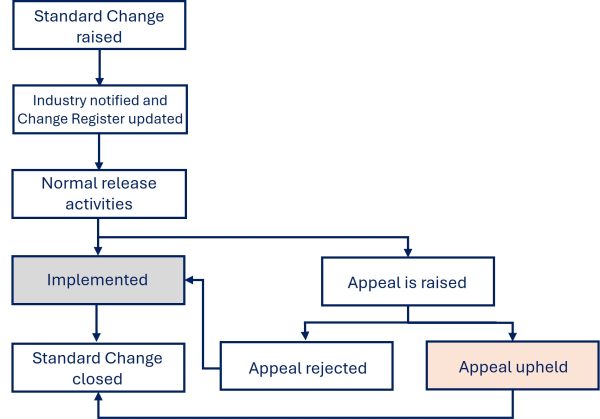About BSC Standard Changes
Standard Changes (SC) are low risk, predictable and repeatable pre-authorised changes to the BSC or Code Subsidiary Documents (CSDs), that can be implemented without following the existing Change Proposal or Modification procedures.
Latest Standard Change Classifications
The following changes have been classified as Standard Changes and will follow the Standard Change process:
- Adding a new Fuel Type to the Insights Solution. [View list of existing Fuel types]
- Housekeeping changes to Code Subsidiary Documents (CSDs)
Standard Change Classification
In order to classify a change as a Standard Change, requests are required to be consulted on and approved by the BSC Panel (in accordance with BSCP40). In addition to Panel approval, requests cannot follow the Standard Change process unless any required ‘enabling changes’ have also been approved and implemented.
Requests to classify a change as a Standard Change, and the tracking of existing classified Standard Changes, will be recorded and documented in the Change Register.
Standard Change Criteria
In order for a Change to be classified as a Standard Change, it must meet the following criteria:
Low risk
A change is considered low risk when it has a minimal or negligible chance of causing adverse effects to Settlement and the IT environment or the business processes it supports for both BSC central systems and participants. The consequence of failure, if it occurs, is minimal.
Repeatable
This relates to the ability to implement the change consistently repeatedly without variations in the process or outcome. For a change to be considered standard, it must be repeatable. This means that the same steps are followed each time.
Predictable
This pertains to the expected outcomes of implementing the change. A predictable change is one where the outcome is known, based on previous implementations or thorough testing. There shouldn’t be any surprises when the change is made.
Standard Change Classification process
The following flow diagram outlines the process for classifying a Standard Change:
Standard Change process
Once a Standard Change has been classified, it then follows the Standard Change process as depicted in the process flow diagram below:
Who can request a change
Any interested individual may:
- request that a change be classified as a Standard Change
- request the initiation and implementation of a Standard Change
- submit an appeal regarding Standard Change decisions.
Each type of Standard Change is subject to a minimum period of time, not less than 16 Working Days (WDs) that must be notified to industry before a Standard Change is implemented.
Background to the introduction of Standard Changes
The Standard Change process was introduced following the implementation on modification P463 ‘Introduce a Standard Change Process’ which highlighted that existing changes to the BSC and BSC Configurable Items are required to go through the Change Process, either as a Modification Proposal (Mod) or as a Change Proposal (CP).
However, a number of routine and low risk changes, and changes to standing data were identified where public consultation and Committee approval was considered disproportionate and unnecessary. The Standard Change process was introduced to provide a more efficient process.


